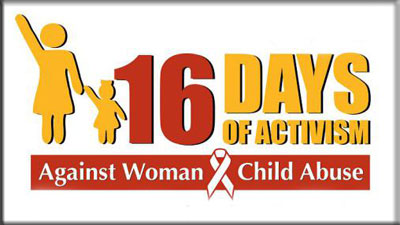#16DaysofActivism : South African lives shaped through violence


An hour later, just after eight o’ clock, we were driving past one of the public schools in the area when one of the detectives pointed to a scene just to our right: ‘Look at that teacher chasing the children,’ he said, ‘He is stupid because he will chase a child into a car.’ Sure enough, marching down the pavement was a shirt-and-tie-clad man in his thirties, swinging and flicking a leather belt at any school child within striking distance. Evidently the children were late for school and the teacher was trying to shepherd them into the school grounds. Knowing that corporal punishment had been banned in South African schools in 1997, I wondered whether the detectives would intervene in what was effectively assault. Needless to say, they didn’t. Perhaps I shouldn’t have expected anything; if they weren’t going to be distracted by an attempted truck hijacking and shooting, they certainly wouldn’t be delayed by a belt-wielding teacher.

This is one of many findings in a crucially important monograph just launched, penned by Chandre Gould of the Institute for Security Studies. Ironically, considering its timing, Beaten bad: the life stories of violent offenders, makes no claim to be about gender-based violence. Rather, it sets out to plot, explore and make sense of the lives of South African men incarcerated for violent crime. Whether the timing of its release is intentional or not, its publication serves as an important reminder that if violence against women and children is to cease then much more attention, support and care must be given to our country’s men.
Using eloquent and empathetic language, Gould invites readers to suspend their judgement of the men whose stories she shares. Instead, we are encouraged to consider how the structural violence of South African life pulled them into the trajectories that lead them to the crimes for which they had been imprisoned, and in some instances the many more for which they were not. She describes childhoods characterised by violence at home and at school. Abusive fathers terrorising mothers and children, themselves traumatised by the daily indignities of life in a country where socio-economic justice appears only as phantom: faint, fleeting, and difficult to believe in. In Gould’s words, the stories show:
[T]hat the combination of experiences of structural violence (seen in high levels of poverty, and lack of access to quality education and health care) and physical violence, in the absence of warm, trusting and caring relationships, gives rise to complex trauma and lays the basis for further violence.
The solutions Gould calls for are not President Zuma’s ‘harsh sentences’. Indeed, each of the offenders interviewed reported that the threat of punishment would not and did not deter their violence (though perhaps a more effective police service that increased their chances of arrest would have). Rather, for South Africa to significantly reduce violent crime, Gould suggests, we must intervene from the moment life is conceived. It is through low-stress, nutrition-rich environments that mothers grow and parents raise children with healthy brains, able to regulate emotion and respond to adversity without violence. For a child to grow into a healthy adult, they need to feel safe and to have consistent relationships over time, absent of physical or emotional abuse. As such, parenting programmes are as important to raising a violence-free generation, as are jobs that pay parents living wages (reducing stress) and childcare and maternity/paternity structures that acknowledge that the care given to children in their first years of life drastically impacts the shape their lives, and so the shape of society as a whole, takes in subsequent decades.
All the men in Gould’s study dropped out of school. Their truancy, along with a number of other flags, signalled the need for early, non-punitive interventions. Instead, where the young men’s behaviour was found to be problematic, they were either beaten or cast out by the adults in their lives, or sent to reformatories where state systems taught them that violence was an appropriate way to express their masculinity. Gould calls for greater awareness of criminal trajectories for criminal justice employees so that young offenders can be diverted away from, rather than drawn into, a prison system which currently teaches, rather than reforms violent behaviour.
Gould concludes her monograph by warning readers not to see the book’s narratives as remnants of apartheid. Instead, she notes, the foundations on which violent behaviour is built, are laid 10 to 20 years before their effects are felt, which brings me back to the detective car in 2012. The detectives I shadowed that day didn’t see any link between the attempted truck-hijacking and the teacher whipping students with his belt. In their eyes, the former was police business and the latter wasn’t. I experienced the same with patrol police in the area who incessantly stopped and searched teen-boys who should have been at school. But as long as the boys weren’t carrying weapons, the officers were happy to leave them to roam the streets. And yet the boy beaten by his teacher or roaming the streets without purpose today may become the truck-hijacker of tomorrow. If South Africa hopes to significantly reduce its very high levels of violent crime in the coming decades, it is precisely in the lack of supportive structures, and the violence committed against young people - especially boy children and young men - that the state needs to intervene. Fortunately, rollout of some relevant interventions is underway, but we need many more.
Yes, the men whose stories Gould shares are responsible for their actions, but so is a state which has failed to protect them from the structural violence that courses through almost every facet of South African life, like blood pumping through the adrenalin-drunk chest of an angry adolescent. Ending violence against women and children begins with our boys and young men, and with how all of us treat them.
- Andrew Faull, 9 December 2015
